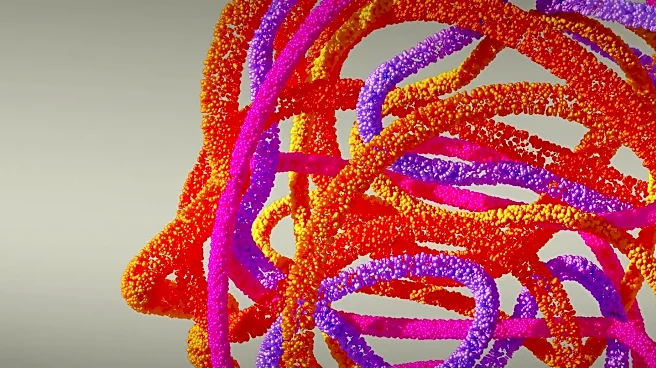What's Happening?
Recent studies have revealed the presence of microplastics and nanoplastics in human brains, raising concerns about their impact on health. Dr. Elizabeth Ryznar, a psychiatrist at St. George's University,
has highlighted the alarming discovery that these tiny plastic particles can travel through the bloodstream and cause inflammation associated with brain illnesses. The particles can enter the brain via the lungs and nose, using the same pathways as olfactory nerves. This finding shifts the narrative of plastic pollution from an environmental issue to a significant human health crisis, as these plastics contain chemicals that can disrupt hormones and affect brain growth.
Why It's Important?
The discovery of microplastics in human brains underscores the urgent need to address plastic pollution as a public health issue. The chemicals in plastics, such as bisphenol A and phthalates, are known to disrupt hormonal balance and potentially contribute to neurological disorders. This revelation could lead to increased scrutiny of plastic use and its regulation, prompting policymakers to consider stricter controls on plastic production and disposal. The findings may also drive public awareness and behavioral changes, encouraging individuals to reduce plastic consumption and seek alternatives to minimize exposure.
What's Next?
Efforts to mitigate plastic exposure are likely to intensify, with potential policy changes aimed at reducing single-use plastics and promoting safer alternatives. Public health campaigns may focus on educating consumers about the risks associated with plastic exposure and encouraging lifestyle changes to minimize contact with microplastics. Researchers may continue to investigate the long-term health effects of microplastics, potentially leading to new guidelines for plastic use in consumer products. Additionally, industries may innovate to develop biodegradable materials and sustainable packaging solutions.
Beyond the Headlines
The presence of microplastics in human brains raises ethical questions about the responsibility of manufacturers and governments in protecting public health. It also highlights the interconnectedness of environmental and human health issues, emphasizing the need for holistic approaches to pollution management. The findings could catalyze a cultural shift towards sustainability, influencing consumer preferences and driving demand for eco-friendly products.











